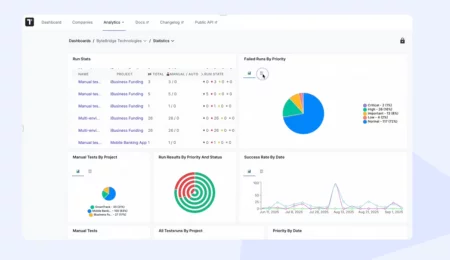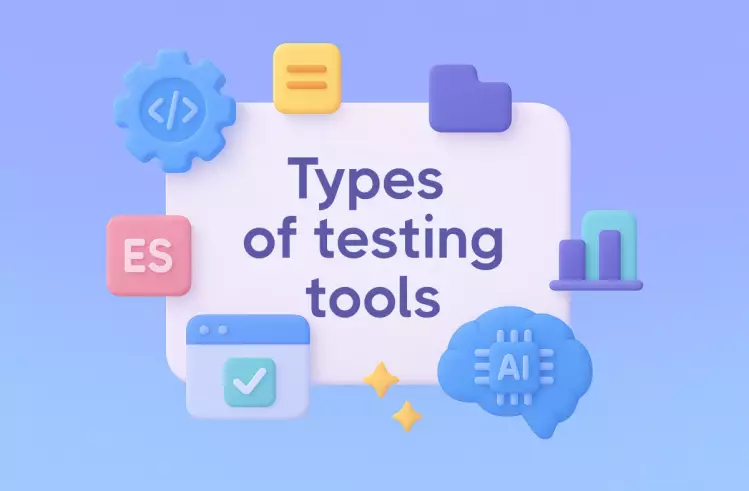Agile teams move fast — QA must keep pace. The problem? Manual test cycles drain time. Disconnected testing tools create bottlenecks. Test results live in scattered spreadsheets while developers push code daily. Your QA team scrambles to validate new features, but the development cycle won’t wait.
Modern agile software development demands something better: agile testing tools that unify automation, manual testing, and team collaboration into one ecosystem. These platforms connect continuous integration pipelines, project management systems, and quality assurance processes. They turn testing activities from a blocker into an accelerator.
Below are the top 10 agile testing tools for 2025, starting with Testomat.io — an AI-enhanced test management solution built for teams that ship fast.
What Are Agile Testing Tools?
Agile testing tools support iterative software development by embedding quality assurance directly into each sprint. Unlike traditional testing software, these platforms adapt to rapid development cycles where new features ship weekly or daily. Here’s what separates agile test management tools from legacy solutions:
- Speed. They integrate with CI/CD tools to run automated tests on every commit. Test execution happens in real time, not at the end of a release cycle.
- Traceability. They link test cases to user stories, project requirements, and defects. When a test fails, the team sees exactly which feature broke and why.
- Collaboration. They connect QA engineers, development teams, and product managers in one workspace. No more hunting through Slack threads or email chains to find test data.
- Automation support. They work with existing test automation frameworks — Selenium, Cypress, Playwright, Jest. Your team doesn’t rewrite tests to adopt a new test management platform.
- Continuous feedback. They surface test results immediately. Developers see failures before merging code. Product quality improves because problems get caught early in the development process.
Agile methodologies require testing tools that match the pace of modern software testing. The right agile test management solution becomes the central hub for testing efforts across manual testing, functional testing, performance testing, and exploratory testing.
Top 10 Agile Testing Tools for 2025
1. Testomat.io — AI-Enhanced Agile Test Management
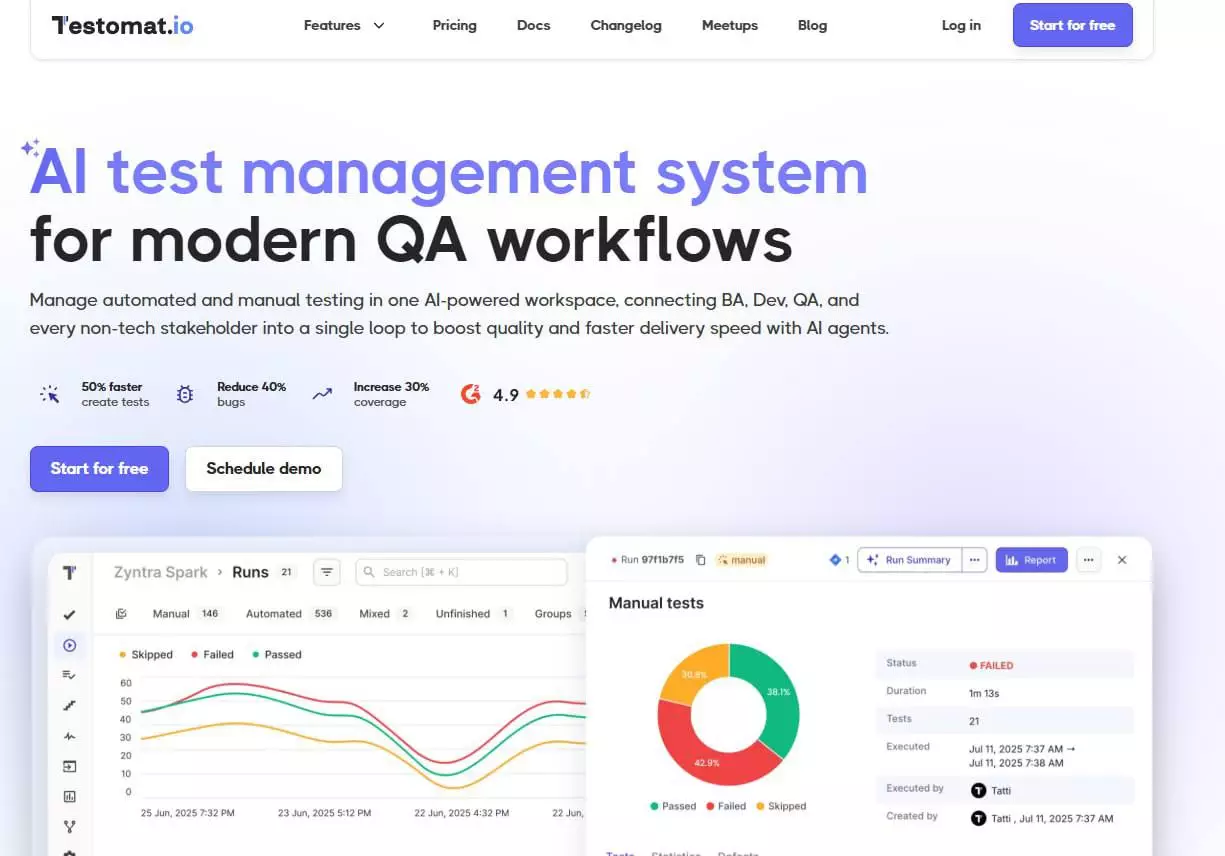
Testomat.io combines manual and automated testing in one AI-powered workspace. It’s built for agile teams that need speed, visibility, and seamless integration with their existing development cycle.
- The platform syncs with Jira in real time. When developers update a user story, QA engineers see changes instantly. Test coverage maps directly to project requirements. No manual updates, no version conflicts.
- AI agents accelerate testing activities. They generate test cases from Jira user stories or GitHub issues automatically. Your team writes fewer tests manually but maintains better test coverage. The AI also detects flaky tests and suggests fixes — reducing noise in CI/CD pipelines.
- Test execution happens inside your continuous integration workflow. Testomat.io connects to GitHub Actions, GitLab CI, Jenkins, and other cd tools without custom scripts. Test results flow back automatically. Developers get notifications in Slack when tests fail.
- The interface feels clean. QA team members navigate test plans without training. Development teams check test results without switching tools. Even non-technical team members can run manual testing sessions directly from the platform.
Key features for Agile projects:
- BDD support with Gherkin editor for writing executable requirements
- Living documentation that updates automatically from test runs
- Advanced analytics showing test coverage, flaky tests, and slowest tests
- Multi-environment testing for staging, production, and QA environments
- Unlimited artifact storage via S3 for screenshots, videos, and logs
- Role-based access for QA engineers, developers, and stakeholders
Testomat.io handles 100,000+ tests per project. Small teams start free. Larger development teams scale without performance issues.
Best for: Agile teams running continuous testing with mixed manual and automated test cases. DevOps teams needing strong integration capabilities across CI/CD pipelines and project management tools.
Start your free trial with Testomat.io and connect your entire QA workflow in minutes.
2. Testsigma — Low-Code Test Automation
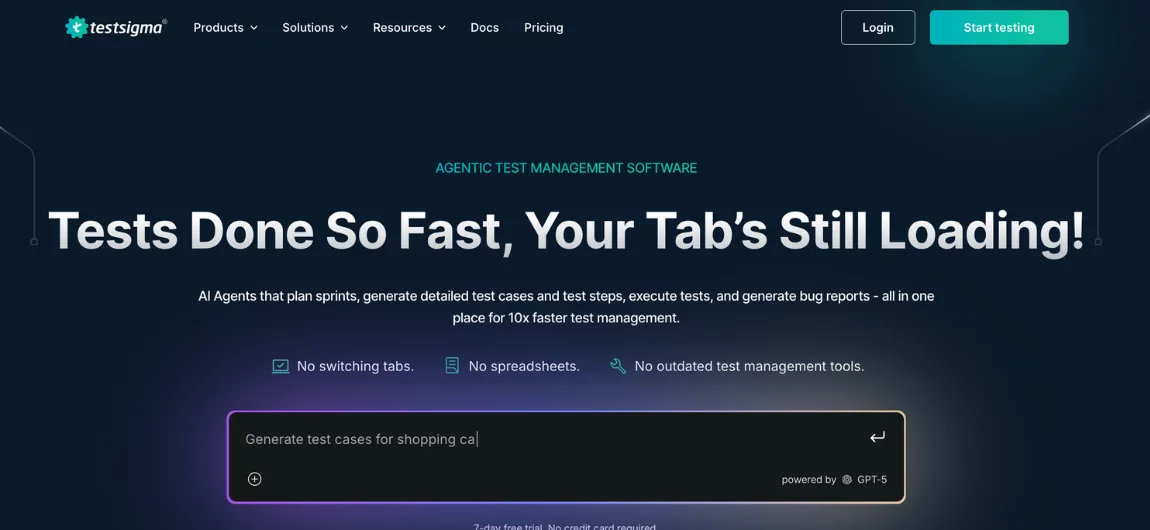
Testsigma brings low-code test automation to agile automated testing. QA engineers write tests in plain English. The platform translates them into executable test scripts.
The tool runs tests on web applications, mobile apps, and APIs from one interface. It’s cloud-based, so test execution scales without managing infrastructure.
Testsigma fits agile development because it reduces the technical barrier. Team members without programming languages experience can create functional testing scenarios. This speeds up test case management when sprints move fast.
Best for: Small teams or QA engineers new to test automation who need agile automation tools without heavy coding.
3. Zephyr Scale — Jira-Native Test Management
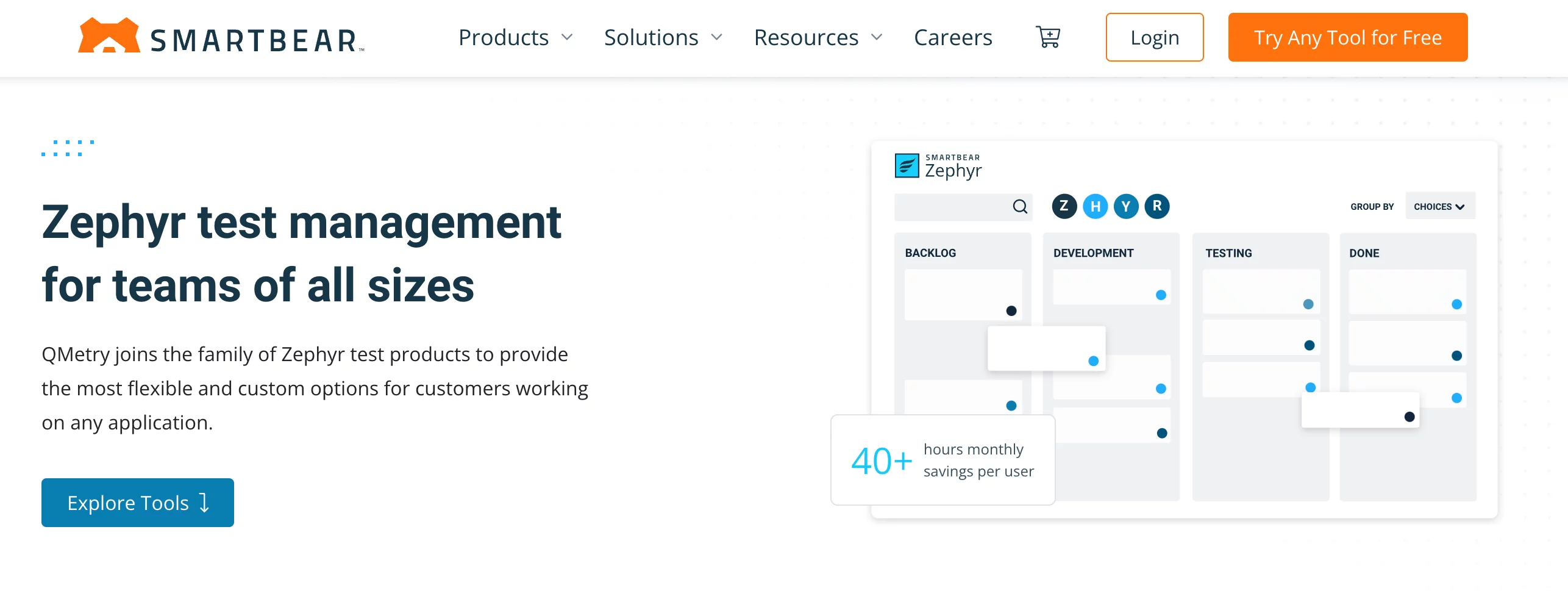
Zephyr Scale lives inside Jira. If your team already uses Jira for project management, Zephyr adds test case management without leaving the platform.
It shows test coverage against user stories on Agile boards. Sprint reports include testing metrics alongside development velocity. The user interface matches Jira’s design, so the learning curve stays flat.
Zephyr supports manual testing and integrates with automation frameworks through APIs. Test results from CI/CD pipelines sync back to Jira issues automatically.
Best for: Agile teams deeply invested in Jira who want test management tools that feel native to their existing workflow.
4. Xray — BDD and Test Management for Jira
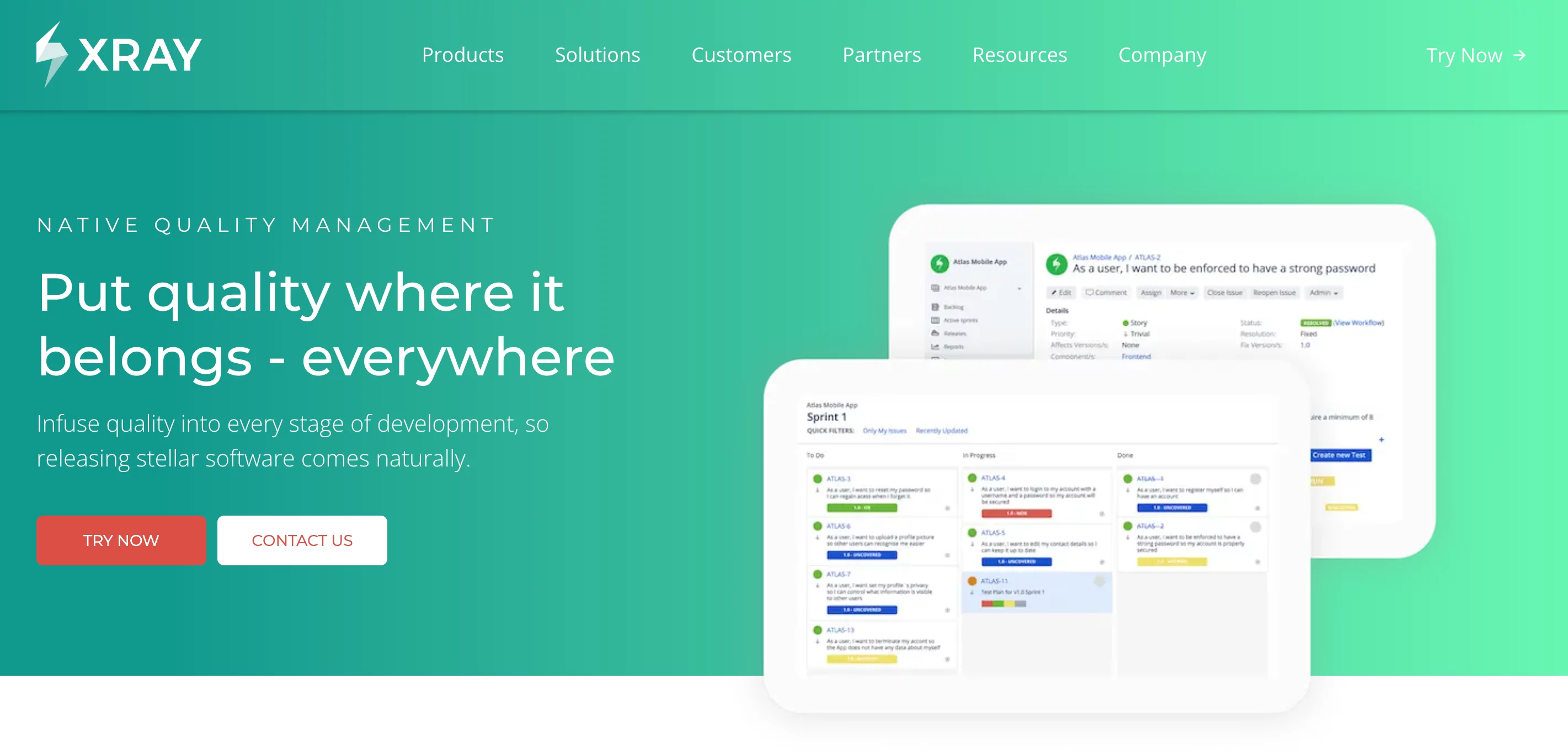
Xray extends Jira with comprehensive test management capabilities. It supports BDD scenarios, manual test cases, and automated testing inside one agile test management tool.
The platform maps requirements to test cases with traceability matrices. QA team members see which features lack test coverage. Developers track which tests validate their code changes.
Xray integrates with continuous integration systems through plugins. Test execution happens in CI/CD pipelines, and results appear in Jira immediately.
Best for: Development teams practicing BDD who need agile test case management software integrated with Jira.
5. PractiTest — Visibility-Focused Test Management
PractiTest emphasizes traceability and visibility across testing activities. The platform connects test cases, test runs, and defects in a single view.
It integrates with multiple issue trackers, not just Jira. Teams using Azure DevOps, GitHub Issues, or ServiceNow can centralize test data in PractiTest while maintaining their preferred project management tool.
Real-time dashboards show test coverage, pass rates, and risk areas. Product managers access quality metrics without digging through testing tools.
Best for: Agile teams needing strong traceability and working with diverse testing needs across multiple project management systems.
6. TestRail — Enterprise Test Case Management

TestRail delivers enterprise-ready agile test management with detailed reporting and dashboards. It handles thousands of test cases across multiple projects.
The platform supports test plans for different testing phases: unit testing, functional testing, regression, performance testing. QA engineers organize test suites by release, sprint, or component.
TestRail integrates with CI/CD tools and issue trackers through APIs and webhooks. Test results from automated testing frameworks sync back automatically.
Best for: Large development teams and enterprises needing scalable test management tools with advanced features and reporting.
7. qTest by Tricentis — Centralized Agile Testing
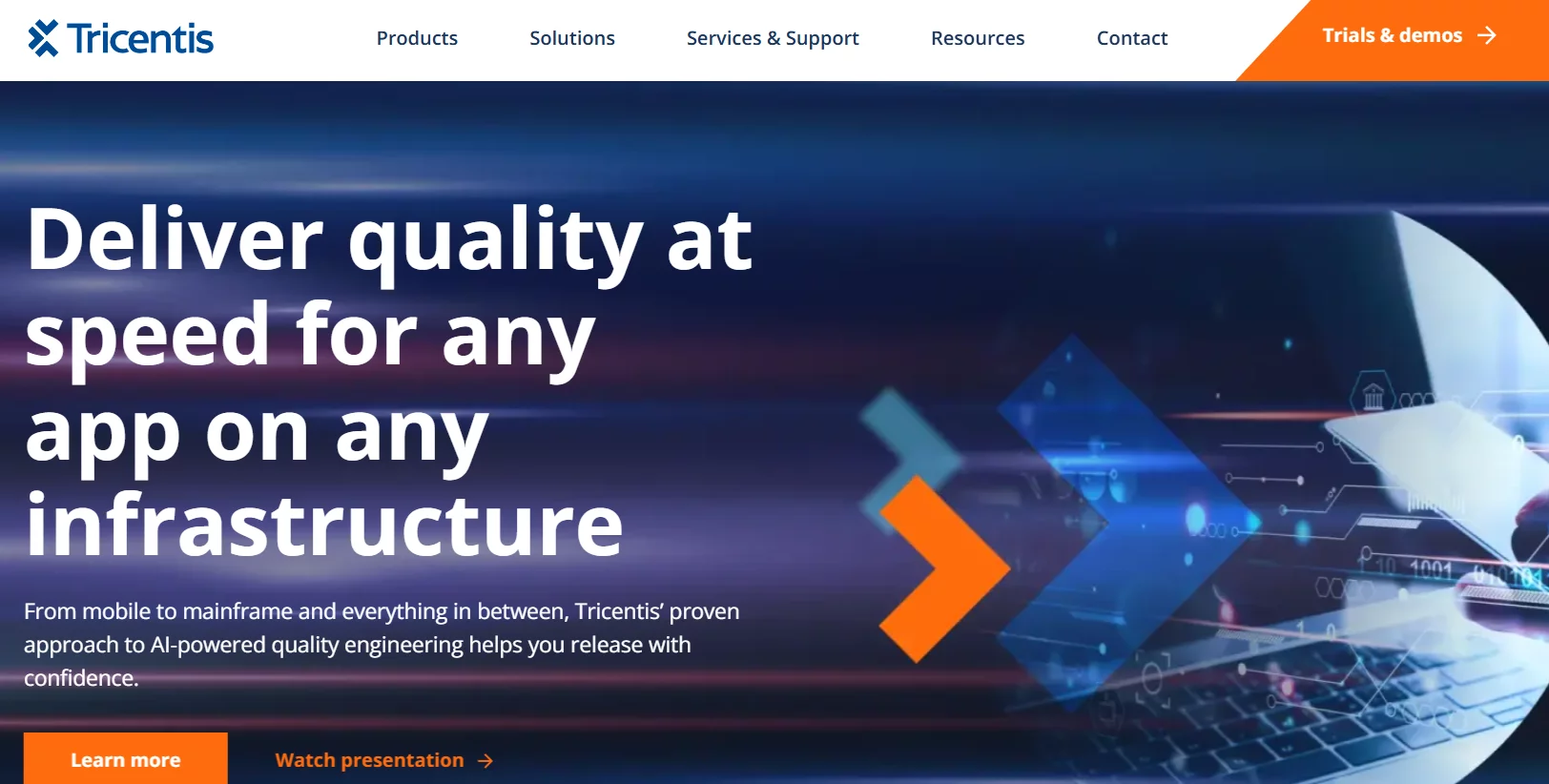
qTest centralizes agile test management across distributed teams. It connects test case management, test execution, and defect tracking in one agile test management platform.
The tool integrates with DevOps pipelines to support continuous testing. Test data flows between development cycle stages without manual handoffs.
qTest includes analytics that surface testing bottlenecks. Teams identify which testing efforts consume the most time and adjust best practices accordingly.
Best for: Mid-sized to large agile teams practicing DevOps who need centralized visibility across multiple projects and team members.
8. Katalon Platform — Unified Testing Solution
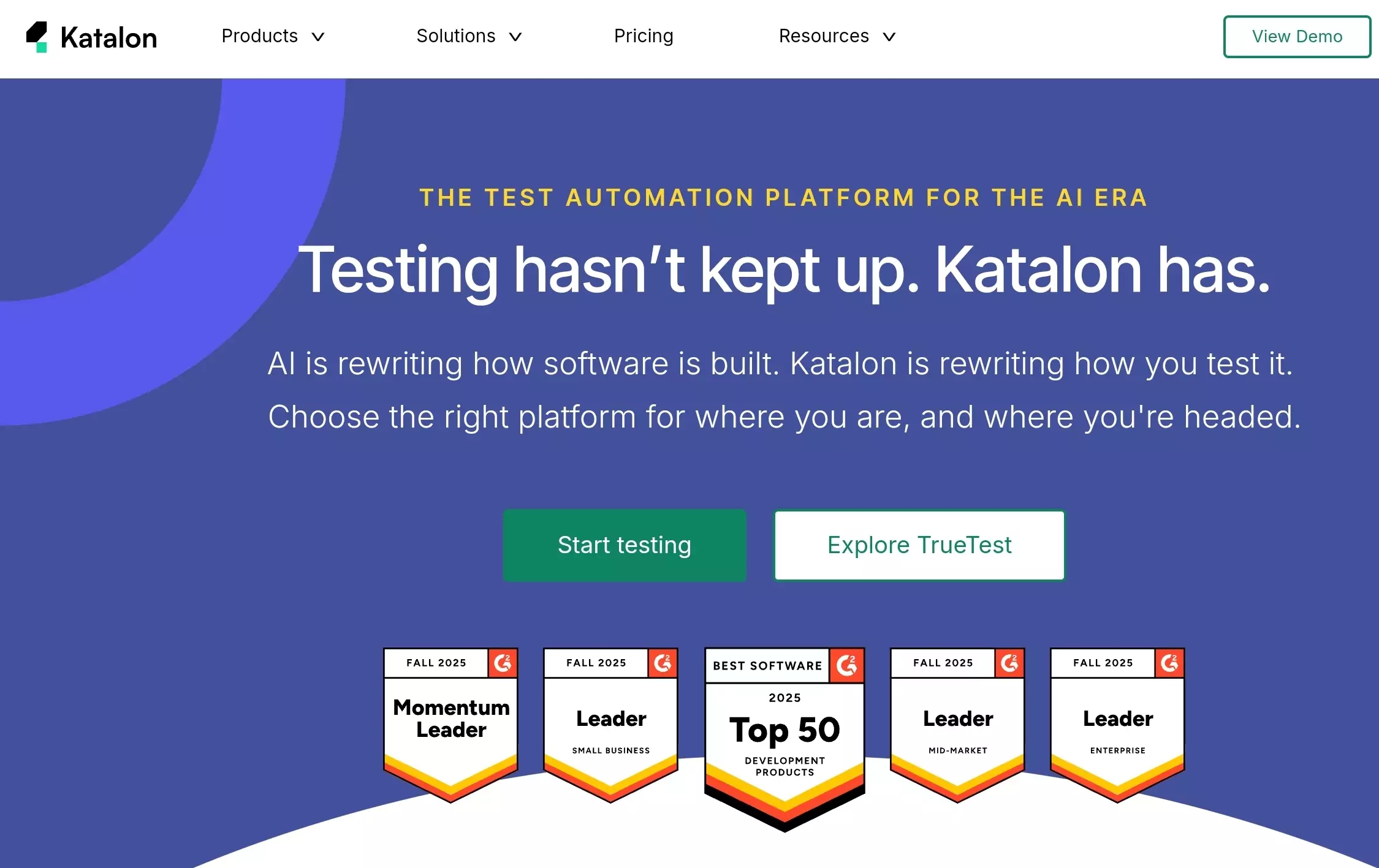
Katalon combines test automation, test management, and analytics in one platform. QA engineers write automated tests, organize them into test plans, and analyze test results without switching tools.
The platform supports web applications, mobile apps, and API testing. It includes built-in reporting for continuous integration environments.
Katalon’s collaboration features let team members share test cases and execution history. The ease of use makes it accessible to QA engineers with varying technical backgrounds.
Best for: Agile teams wanting an all-in-one testing solution that handles automation and test management together.
9. Jira Align — Strategic Agile Planning
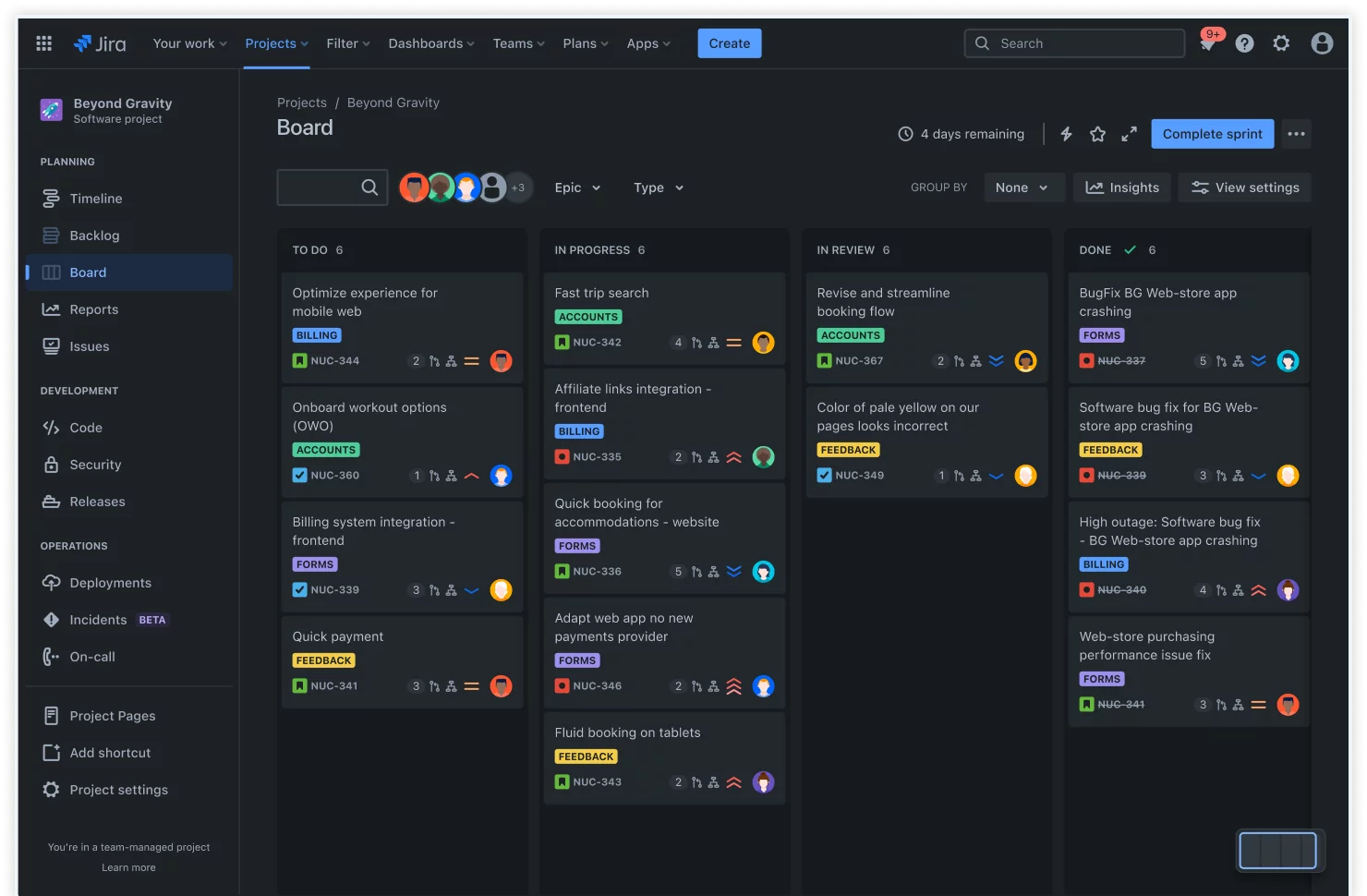
Jira Align connects QA activities to business outcomes at the portfolio level. It’s less about day-to-day test execution and more about aligning testing efforts with strategic goals.
The platform shows how software quality impacts product releases and business objectives. Leadership sees which agile projects face quality risks before launch.
Jira Align works alongside other testing tools. It aggregates quality metrics from test management solutions and displays them in executive dashboards.
Best for: Enterprises scaling agile methodologies across multiple teams who need strategic alignment between QA and business planning.
10. BrowserStack — Cloud Testing Infrastructure
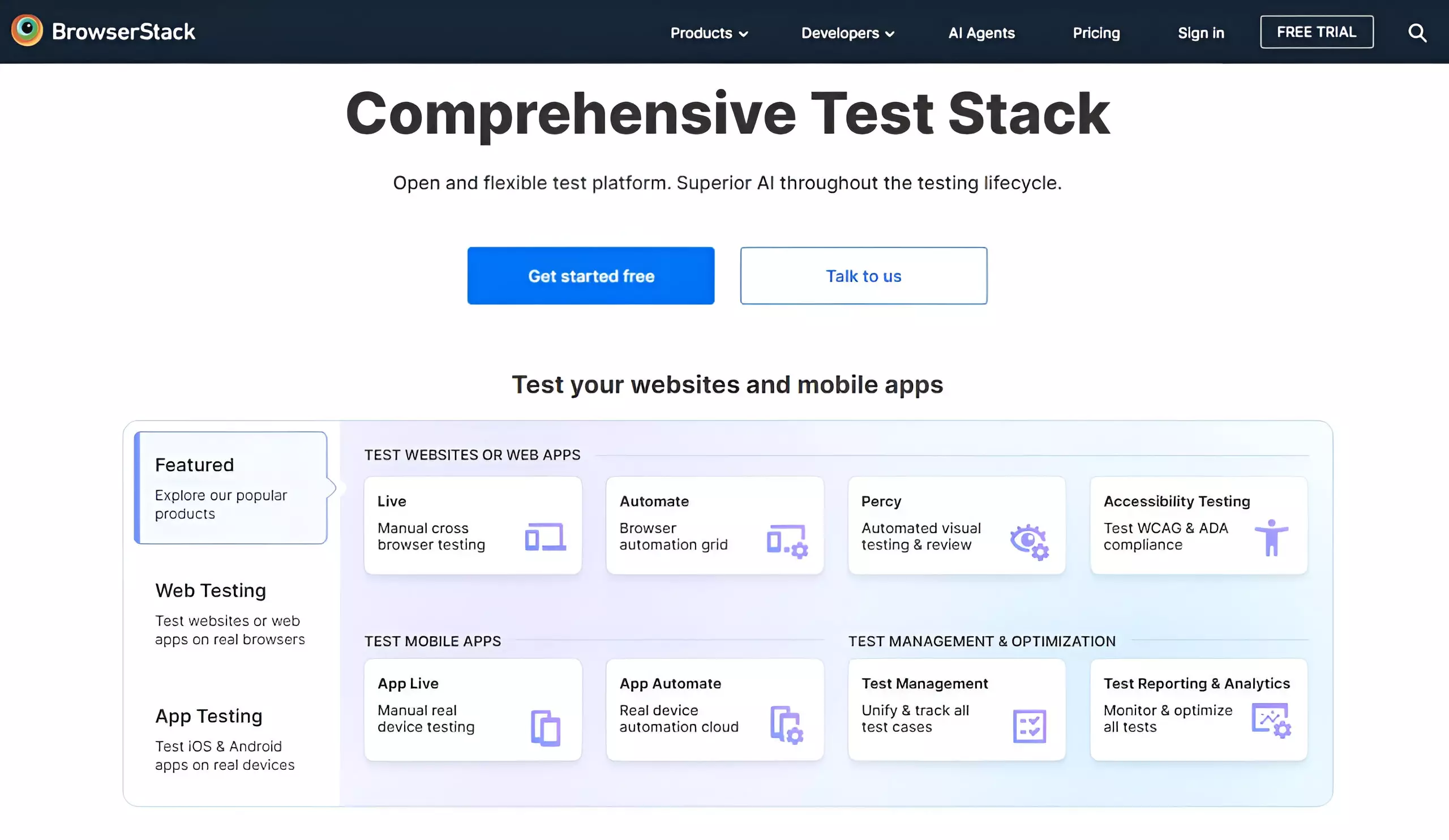
BrowserStack provides cloud-based infrastructure for cross-browser and device testing. Agile teams run automated tests on real browsers and devices without maintaining test labs.
The platform integrates with continuous integration pipelines. Tests execute on BrowserStack’s infrastructure during CI/CD runs, and results return to your test management tool.
It supports Selenium, Cypress, Playwright, and other test automation frameworks. QA engineers write tests once and run them across hundreds of browser-device combinations.
Best for: Agile teams needing cross-browser testing and device coverage without infrastructure overhead.
How to Choose the Right Agile Testing Tool
Selecting agile testing software depends on your team’s specific needs. Here are five factors that separate useful tools from exceptional ones:
Integration Capabilities
Your testing tool must connect to your existing tech stack. Check for native integrations with your CI/CD tools (Jenkins, GitHub Actions, GitLab CI), project management platform (Jira, Azure DevOps), and communication channels (Slack, Microsoft Teams).
Testomat.io offers seamless integration with major CI/CD pipelines, Jira, and notification systems. Teams connect their workflow in minutes, not weeks.
Scalability
Small teams grow into large development teams. Your agile test management solution should handle increasing test coverage without performance degradation.
Can it support 10,000 test cases? 100,000? Does test execution slow down as the test suite grows? Testomat.io runs 100K+ tests per project with enterprise-grade stability.
AI Capabilities
AI-powered features accelerate testing activities beyond manual effort. Look for tools that generate test cases from requirements, detect flaky tests automatically, and suggest optimizations.
Testomat.io’s AI agents create test-ready scenarios from user stories. They reduce manual overhead while improving test coverage. The platform fine-tunes suggestions based on your team’s testing patterns.
Reporting and Analytics
Real-time visibility matters in agile development. Your team needs dashboards showing test results, test coverage, pass rates, and quality trends immediately.
Advanced analytics identify flaky tests, slow tests, and untested features. Testomat.io provides built-in dashboards that surface actionable insights without custom configuration.
Collaboration Features
Quality assurance processes involve multiple stakeholders. Your agile testing tool should enable collaboration between QA engineers, developers, product managers, and business analysts.
Look for features like shared test plans, inline comments, role-based access, and notification workflows. Testomat.io connects everyone in one workspace where testing activities stay visible and coordinated.
Why Testomat.io Leads Agile Test Management
Most agile test tools focus on one area: test automation, test case management, or CI/CD integration. Testomat.io bridges all three.
- It handles manual testing and automated testing equally. Your team doesn’t choose between approaches. Mixed test runs combine exploratory testing with regression automation in one execution cycle.
- AI capabilities reduce repetitive work. Test generation from requirements cuts test case creation time significantly. Flaky test detection keeps CI/CD pipelines reliable. Smart suggestions improve test coverage without manual analysis.
- Integration works out of the box. Connect Jira, GitHub, GitLab, Jenkins, or Slack with simple configuration. Test results sync automatically. Developers receive continuous feedback without context switching.
- Reporting shows what matters. Real-time dashboards track test execution, coverage, and quality trends. Product managers see software quality metrics without digging through testing tools. QA team members identify bottlenecks before they impact the development process.
- It scales with your team. Start free with two users and two projects. Grow to 100K+ tests without performance issues. The platform adapts to small teams, mid-sized products, and enterprise agile projects.
Next Steps
Agile teams need testing tools that match their pace. Legacy test management platforms slow down continuous delivery with rigid workflows and poor integration.
Modern agile testing tools like Testomat.io remove those barriers. They unify test case management, test automation, and collaboration in one AI-powered workspace. Quality assurance processes become faster, more visible, and genuinely continuous.
Try Testomat.io free and streamline your Agile QA cycle. Connect your CI/CD pipeline, import existing test cases, and start running tests in minutes. See how AI-enhanced test management accelerates your development cycle without replacing your existing automation frameworks.
Your team ships code daily. Your testing tools should keep up.
